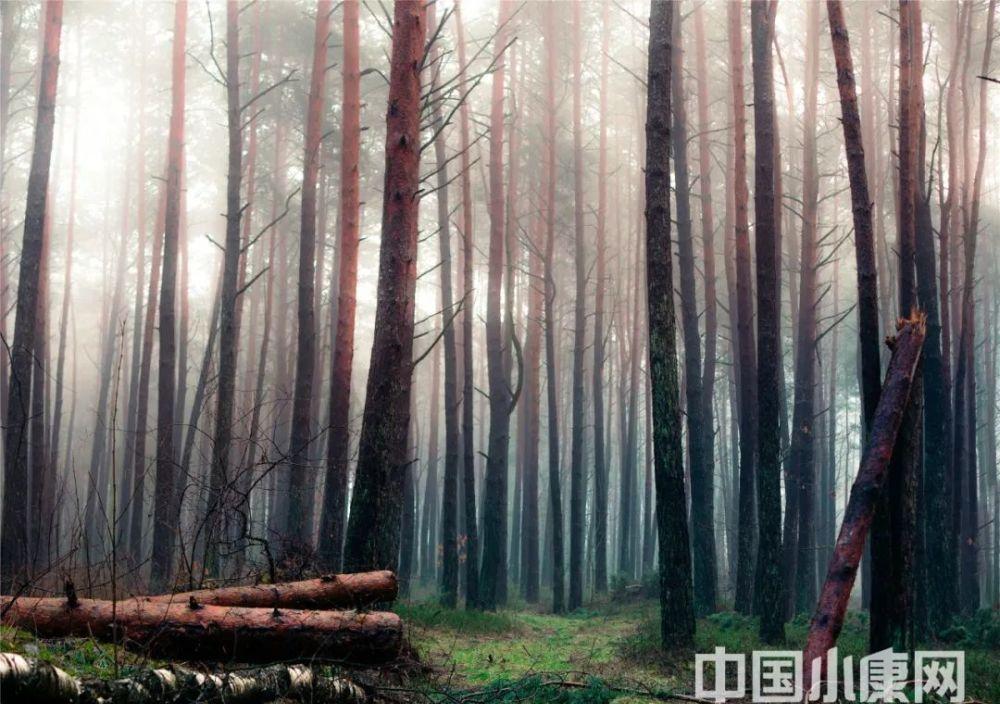It seems that the communication between art is first of all the connection between the world view and the aesthetic realm. The sunset between the trees and the mountains on the trees are all nourished by art and bring many fresh creations to the world.
The first time I saw the sunset was in the winter season.
There is a row of interlaced poplar trees in the wilderness skyline, where the branches meet the skyline, where the round red sunset hangs. I inadvertently glanced back and saw the setting sun sliding slowly toward the row of straight white trunks and falling at a uniform rate, and the setting sun gave the row of poplars a crimson glow.
I am afraid that many people have experienced this kind of splendor. Since then, in North China, where there are four distinct seasons, I have loved winter. My favorite thing to do in winter is to think about the trees with their many postures.

Every winter, when the trees wither, the true outline of the tree itself is revealed. A large tree has been lost since its leaves have fallen, how thick and tall and curved its body is, its canopy is oval or triangular, its bark lines are longitudinal or smooth and tight, and whether the branches are dense or sparse, you can see at a glance. At this time, it felt like the tree and I were really naked and looking at each other.
Since learning to appreciate Chinese painting, I have found that almost all the landscape paintings of the ancients will have trees. The mountains are not high, and the trees are alive. The Ming Dynasty painter Dong Qichang mentioned in his works that painting trees is the first place to learn painting. The secret of painting trees is not to draw straight trees, but precisely to draw "thousands of curves, no compound straight pen", and learning to paint trees should not only teach the ancients, but also teach the law of the world. After being pointed out by the painter, when I looked at the tree with their eyes, I found that the willow tree in winter, the branches alone were also long and soft, and the difference between it and it was that the branches of the ginkgo biloba branch were short and straight. At the end of each branch of the luan tree is a bulging node, and the magnolia tree often gives birth to flower buds early.
In addition to the fact that the tree itself is worth pondering, you will also find it interesting when various birds and finches perch on the branches. In particular, the persimmon tree is left with only small red lantern-like fruits, or red honeysuckle on gold and silver trees, attracting magpies, crows, sparrows, partridges, and other birds to peck at them. Maybe the birds are just frolicking and resting, and their colorful movements make all the trees full of charm. And the birds rise and fall in the trees, because there is no leaf to cover it is clearer, and the world in this space is theirs.
In addition to the above benefits, the winter tree, as well as Wang Guowei's evaluation of the aesthetic principle of the poetic realm in "Words and Words on Earth", is the beauty of separation and non-separation. Because of these branches, the empty sky is particularly conspicuous, and the sky seen through the branches appears more blue, the sunset is more dazzling, and the tall buildings seen are deeper.
These natural creations are exploited by designers with a heart. Wang Peng mentioned in the book "Building a House" that many of his architectural designs were influenced by Chinese landscape painting. For example, when designing the Tengtou Museum in Ningbo, he recorded: "The Ming Dynasty painter Chen Hongshou's "Map of the Five Leaking Mountains" turned to it by accident, but it suddenly appeared like I expected, with all the linguistic elements I visualized. From this map, I saw directly the Tengtou Museum in Ningbo, or in other words, I saw new possibilities for rural architecture in this area. A layered doorway made of trees with large trees towering over the hole. A more geometric language appears on the hills in the trees behind the cave. It's a typical worldview painting and it's very architectural. As a result, Ningbo TengtouGuan has become a unique building that embodies the Chinese temperament, attracting various characters to observe and learn, lingering.
"I see how feminine Qingshan is, and I think Qingshan should be like this when he sees me." When Ming dynasty painters painted mountains and trees, they did not know that their paintings could be directly translated into modern architecture. Similarly, many modern buildings have become the source of the painter's creation of the next work of art. It seems that the communication between art is first of all the connection between the world view and the aesthetic realm. The sunset between the trees and the mountains on the trees are all nourished by art and bring many fresh creations to the world.
Source: Xiaokang magazine, early January 2022
Author: Sand
Editor-in-charge: Dina Zhao
WeChat editor-in-charge: Tian Yuan Weiying
(This article is the original article of Xiaokang magazine.) If you need to reprint, please leave a message at the end of the article to apply and get authorization. Please indicate the source and author of the reprint, thank you! )